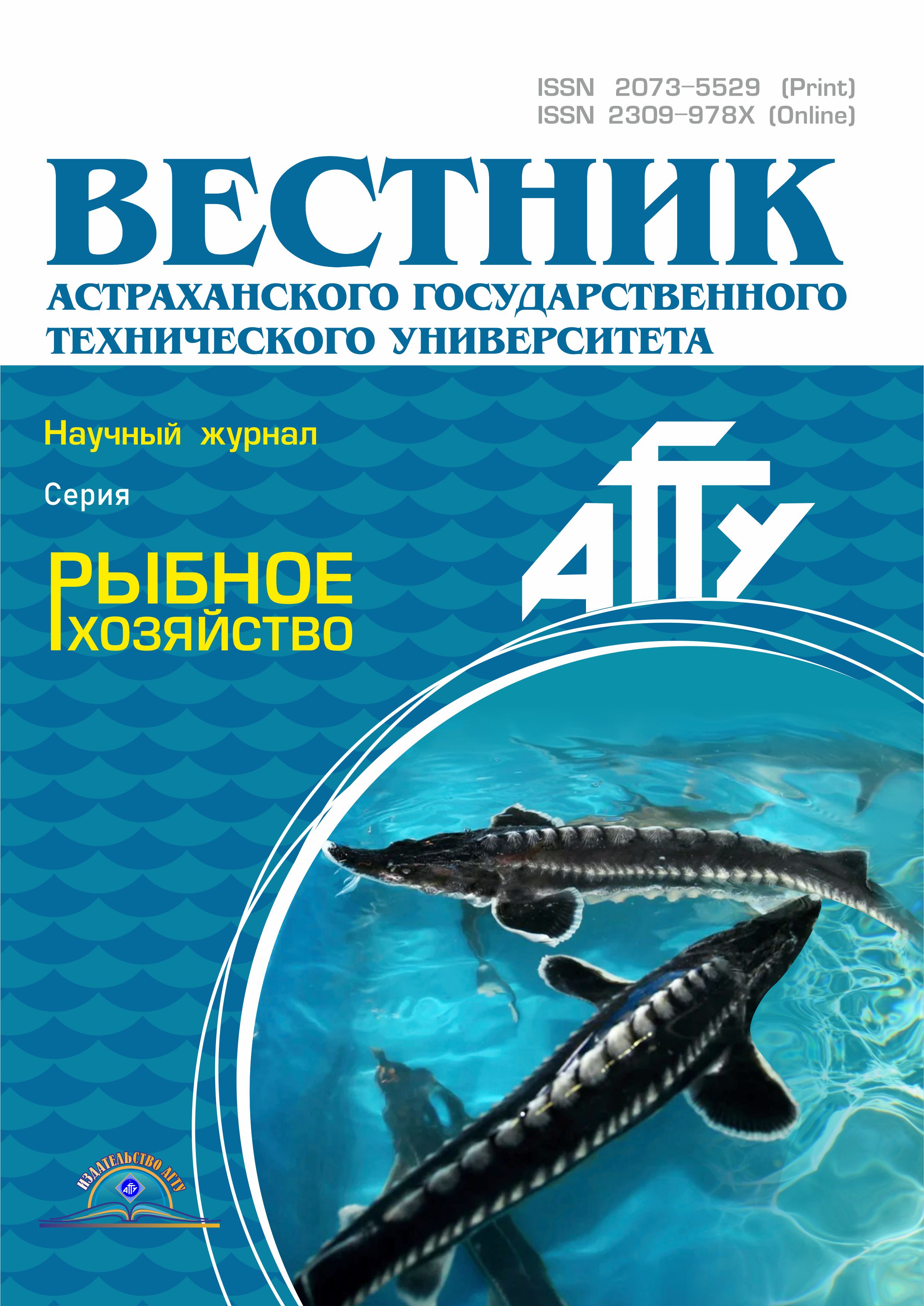CSCSTI 34.39
CSCSTI 62.13
CSCSTI 69.01
CSCSTI 69.25
CSCSTI 69.31
CSCSTI 69.51
CSCSTI 87.19
Since Caspian sprat today is a reserve fishery object, hydroacoustic studies are the main purpose of solving the problem of estimating concentrations, areas and terms of the organization of the Russian marine fishery. A promising fishing area is the region of the middle part of the Caspian Sea, off the Dagestan coast, which has been studied since 2011. As it was found during previous studies, the densest sprat schools form in the autumn period in the bottom layer. The present research focuses on Caspian sprat distribution in the western part of the Middle Caspian in November 2018. Hydroacoustic tacks covered a water area of 630 NM. The echo recordings of hydroacoustic surveys covering the water area at the depths 20-60 m were analyzed. The recordings were studied considering the response of sprat to the day and night light. Processing of hydroacoustic data was carried out in several stages: analytical viewing of echograms purposed to identify specific features of sprat; recording minimum and maximum values of echo intensity depending on the depth; data post-processing in SIMRAD BI-60 program. The distribution of Caspian sprats is represented totally from the water surface to the ground, and layer by layer, in layers of 10 meters from the water surface. It has been stated that in the surface layer there are practically no sprat schools. The maximum value of the average density (8.7 t / mile2) was registered in the bottom layer (40-50 m). The study results can be used in organization of Russian sprats fishing in the Caspian Sea.
hydroacoustic studies, Middle Caspian, north-western part of the Caspian Sea, sprat schools density, echogram, echoregistration, echo intensity
1. Kanat'ev S. V., Pomogaeva T. V., Razinkov V. P. Perspektivy morskogo tralovogo promysla obyknovennoy kil'ki v rossiyskoy chasti Severnogo Kaspiya // Sohranenie biologicheskih resursov Kaspiya: materialy i dokl. Mezhdunar. nauch.-prakt. konf. (Astrahan', 18-19 sentyabrya 2014 g.). Astrahan': Izd-vo AGTU, 2014. S. 62-71.
2. Kanat'ev S. V., Kalmykov V. A., Parickiy Yu. A., Aseynova A. A., Razinkov V. P., Pomogaeva T. V., Balchenkov I. B. Sovremennoe sostoyanie i perspektivy razvitiya promysla kaspiyskih kilek // Biologicheskoe raznoobrazie Kavkaza i Yuga Rossii: materialy XIX Mezhdunar. prakt. konf. s elementami nauch. shk. molodyh uchenyh. Mahachkala, 2017. S. 620-622.
3. Pomogaeva T. V. Osobennosti prostranstvennogo raspredeleniya kaspiyskih kilek v glubokovodnoy chasti Kaspiyskogo morya po rezul'tatam gidroakusticheskih issledovaniy v 2016 g. // Biologicheskoe raznoobrazie Kavkaza i Yuga Rossii: materialy XIX Mezhdunar. prakt. konf. s elementami nauch. shk. molodyh uchenyh. Mahachkala, 2017. S. 644-645.
4. Pomogaeva T. V. Osobennosti raspredeleniya promyslovyh skopleniy kilek v Srednem Kaspii v letniy period // Morskaya tehnika i tehnologii. Bezopasnost' morskoy industrii: materialy VI Mezhdunar. nauch. konf. VI Mezhdunar. Balt. mor. foruma (Kaliningrad, 3-6 sentyabrya 2018 g.). Kaliningrad: Izd-vo BGARF, 2018. T. 2. 479 s.
5. Metodicheskie rekomendacii po provedeniyu gidroakusticheskih s'emok zapasov kilek v Kaspiyskom more. Murmansk: PINRO KaspNIRH, 1990. 90 s.
6. Pomogaeva T. V., Balchenkov I. B., Smirnov A. V. Osobennosti ispol'zovaniya postprocessingovoy programmy BI-60 (SIMRAD) dlya opredeleniya biomassy kaspiyskih kilek po gorizontam v severo-zapadnoy chasti Kaspiyskogo morya // Sovremennoe sostoyanie bioresursov vnutrennih vod: materialy dokl. II Vseros. konf. s mezhdunar. uchastiem (Borok, Rossiya, 6-9 noyabrya 2014 g.): v 2 t. M.: Poligraf-Plyus, 2014. T. 2. S. 458-463.
















